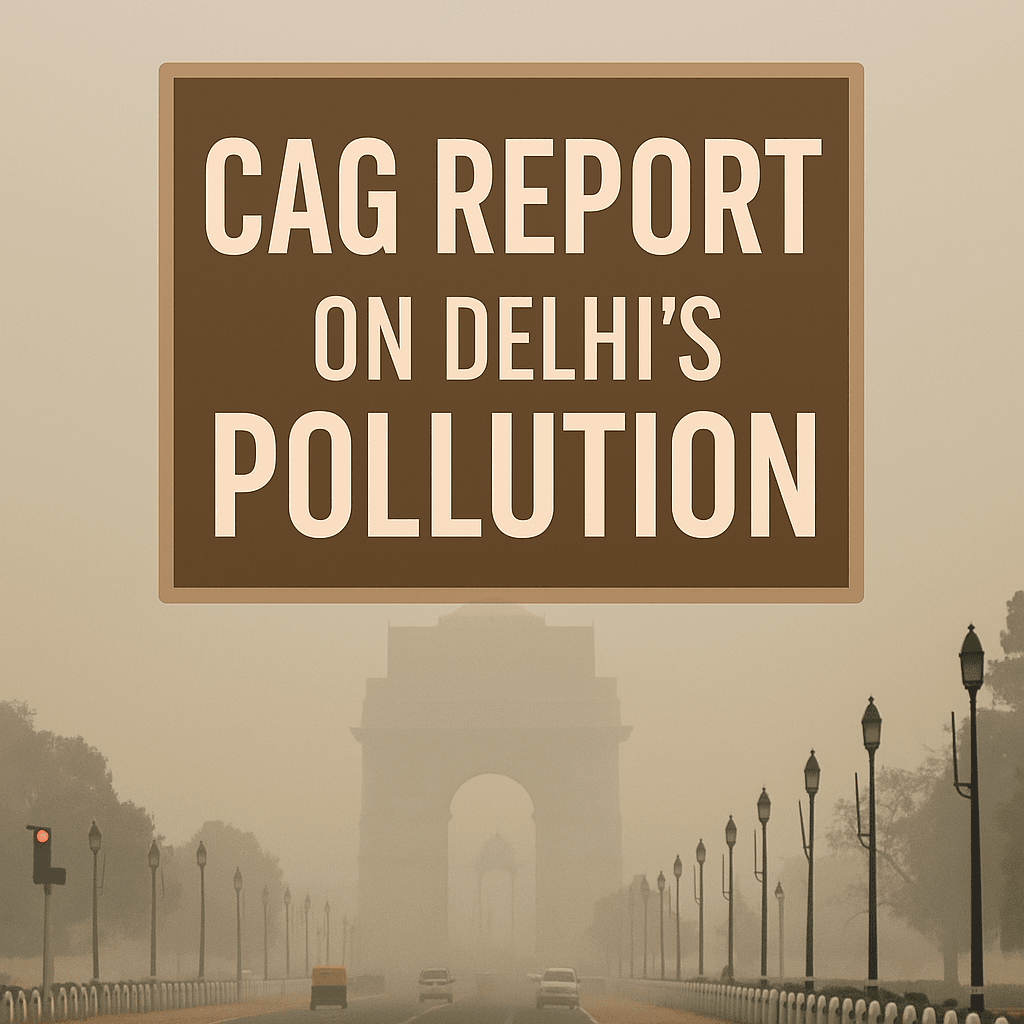
The Comptroller and Auditor General (CAG) of India has released a highly anticipated report highlighting serious shortcomings in the management of air pollution in Delhi. Presented in the Delhi Assembly on Tuesday, the report titled “Prevention and Mitigation of Vehicular Air Pollution in Delhi, 2021” raises significant concerns about the effectiveness of the measures taken to combat pollution in the capital city.
Delhi, which frequently tops the list of the world’s most polluted cities, has been battling worsening air quality for years. This latest report underscores major flaws in pollution control strategies, enforcement, and fund utilization, exposing critical gaps that have contributed to the crisis.
Key Findings of the CAG Report
The CAG audit provides an in-depth analysis of air pollution control mechanisms and their inefficiencies. Below are the most striking revelations from the report:
1. Faulty Air Quality Monitoring System
The report highlights major flaws in Delhi’s air quality monitoring system. Many air quality monitoring stations were found to be incorrectly positioned—situated near trees, buildings, or roads—leading to inaccurate readings of pollution levels. This raises serious doubts about the reliability of data used to formulate policies and action plans.
In addition, several monitoring stations were found non-functional for extended periods, which meant that pollution levels were not consistently recorded. This failure has hampered efforts to track pollution trends and take necessary action in real time.
2. Pollution Under Control (PUC) Certificate Irregularities
The report uncovers serious issues with the issuance of Pollution Under Control (PUC) certificates in Delhi. In many cases, multiple certificates were issued within seconds, raising concerns about the authenticity of the tests conducted.
The report suggests that many vehicles may have received clearance without undergoing proper emissions testing, allowing high-polluting vehicles to continue operating unchecked.
3. Mismanagement of Parking Funds
Delhi collects a substantial amount of funds from parking fees and vehicle taxes, which are meant to be used for building and maintaining parking infrastructure. However, the CAG report highlights that these funds were not utilized properly, leaving Delhi with inadequate parking facilities.
Due to the lack of proper parking, vehicles are often parked illegally on roadsides, leading to congestion and increased emissions as vehicles remain idle in traffic. This not only worsens pollution but also affects the overall quality of life in the city.
4. Staff and Equipment Shortage at Checkpoints
The Department of Transport (DoT) had identified the need for 1,134 additional personnel to monitor vehicular pollution at Delhi’s entry points and within the city. However, as of September 2021, these vacancies remained unfilled.
Without enough staff and proper equipment, enforcing pollution control measures—such as stopping high-emission vehicles from entering the city—has been ineffective. This has allowed thousands of polluting vehicles to enter Delhi daily, further deteriorating air quality.
5. Lack of Action Against Polluting Industries
The audit also found that action against industrial units violating pollution norms was insufficient. Several factories operating within Delhi’s industrial areas continued to emit high levels of pollutants, despite regulations meant to control emissions.
The failure to strictly enforce green norms for industries has contributed significantly to the worsening air quality in the city. Stronger policies and stringent monitoring are needed to control emissions from these sources.
Political Controversy Surrounding the Report
The CAG report has sparked a political debate, with the current Bharatiya Janata Party (BJP) government alleging that 14 critical reports were withheld by the previous administration. Delhi Chief Minister Rekha Gupta has now committed to making these reports public in the ongoing Assembly session.
Environmental activists and opposition leaders have criticized the lapses highlighted in the report, urging for urgent corrective measures to curb air pollution in Delhi.
What This Means for Delhi Residents
With winter approaching, air pollution levels in Delhi are expected to rise sharply, making the need for urgent action even more critical. The findings of the CAG report reinforce the need for:
- Improved air quality monitoring with functional stations placed in scientifically accurate locations.
- Stronger enforcement of PUC certification to prevent fake emission clearances.
- Transparent utilization of funds meant for pollution control and parking infrastructure.
- More manpower and better technology at pollution checkpoints to stop non-compliant vehicles from entering Delhi.
- Strict action against industries violating emission norms.
A Call for Immediate Action
As Delhi continues to struggle with hazardous air pollution levels, this report serves as a wake-up call for authorities. Effective implementation of pollution control policies, proper fund allocation, and strict monitoring are crucial to improving Delhi’s air quality.
Without decisive action, Delhi risks facing even more severe environmental and public health crises in the coming years. With the CAG report now in the public domain, the pressure is on the government and regulatory bodies to take meaningful steps toward a cleaner, healthier Delhi.





